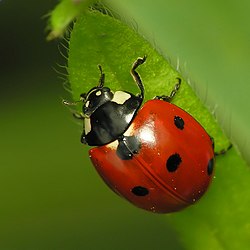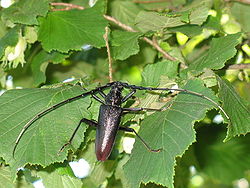Scarabaeus (scarab beetles)





- Scarabaeus hercules – male of Dynastes hercules [1]
- Scarabaeus actaeon – Megasoma actaeon [2]
- Scarabaeus simson – Strategus simson [3]
- Scarabaeus atlas – Chalcosoma atlas [2]
- Scarabaeus aloëus – Strategus aloeus [3]
- Scarabaeus typhoeus – Typhaeus typhoeus [2]
- Scarabaeus nasicornis – Oryctes nasicornis [4]
- Scarabaeus lunaris – Copris lunaris [5]
- Scarabaeus cylindricus – Sinodendron cylindricum [6]
- Scarabaeus carnifex – Phanaeus carnifex
- Scarabaeus rhinoceros – Oryctes rhinoceros [2]
- Scarabaeus molossus – Catharsius molossus [2]
- Scarabaeus mimas – Diabroctis mimas
- Scarabaeus sacer – Scarabaeus sacer [2]
- Scarabaeus didymus – Phileurus didymus [2]
- Scarabaeus valgus – Phileurus valgus [7]
- Scarabaeus nuchicornis – Onthophagus nuchicornis [8]
- Scarabaeus subterraneus – Eupleurus subterraneus [8]
- Scarabaeus erraticus – Colobopterus erraticus [8]
- Scarabaeus maurus – Glaphyrus maurus [9]
- Scarabaeus fossor – Teuchestes fossor [8]
- Scarabaeus fimetarius – Aphodius fimetarius [8]
- Scarabaeus haemorrhoidalis – Aphodius haemorrhoidalis [8]
- Scarabaeus conspurcatus – Chilothorax conspurcatus
- Scarabaeus gigas – Heliocopris gigas [2]
- Scarabaeus scaber – female of Dynastes hercules [1]
- Scarabaeus longimanus – Euchirus longimanus [2]
- Scarabaeus pilularius – Canthon pilularius [2]
- Scarabaeus schaefferi – Sisyphus schaefferi
- Scarabaeus stercorarius – Geotrupes stercorarius [10]
- Scarabaeus vernalis – Trypocopris vernalis [10]
- Scarabaeus calcaratus
- Scarabaeus fabulosus
- Scarabaeus chrysis – Macraspis chrysis [2]
- Scarabaeus nitidus – Cotinis nitida [2]
- Scarabaeus lanigerus – Cotalpa lanigera [2]
- Scarabaeus festivus – Oxysternon festivum
- Scarabaeus lineola – Rutela lineola
- Scarabaeus punctatus – Pelidnota punctata [8]
- Scarabaeus sepicola
- Scarabaeus syriacus – Pygopleurus syriacus [11]
- Scarabaeus horticola – Phyllopertha horticola
- Scarabaeus melolontha – Melolontha melolontha
- Scarabaeus solstitialis – Amphimallon solstitialis
- Scarabaeus hemipterus – Valgus hemipterus [8]
- Scarabaeus fullo – Polyphylla fullo
- Scarabaeus fasciatus – Trichius fasciatus [2]
- Scarabaeus indus – Euphoria inda [2]
- Scarabaeus brunnus – Serica brunnea
- Scarabaeus capensis – Trichostetha capensis [2]
- Scarabaeus lanius – Gymnetis lanius
- Scarabaeus auratus – Cetonia aurata [2]
- Scarabaeus variabilis – Gnorimus variabilis
- Scarabaeus nobilis – Gnorimus nobilis
- Scarabaeus rufipes – Acrossus rufipes [8]
- Scarabaeus aquaticus – Hydrobius fuscipes
- Scarabaeus ceratoniae – Sinoxylon ceratoniae [12]
- Scarabaeus cervus – Lucanus cervus [6]
- Scarabaeus interruptus – Passalus interruptus [2]
- Scarabaeus carinatus – Chalcodes carinatus [2]
- Scarabaeus tridentatus – artificial chimaera, comprising the head of Lucanus cervus on the body of Prionus coriarius [13]
- Scarabaeus parallelipipedus – Dorcus parallelipipedus [6]
- Scarabaeus caraboides – Platycerus caraboides











